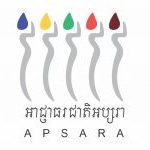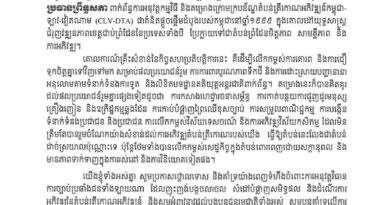សារមន្ទីរវាយនភណ្ឌប្រពៃណីអាស៊ី គ្រោងនឹងដាក់តាំងពិព័រណ៌ផលិតផលសូត្រខ្មែរចំនួន១១មុខ នៅពាក់កណ្ដាលខែកុម្ភៈ ឆ្នាំ២០២៣ខាងមុខនេះ។ ផលិតផលទាំង១១មុខនេះ មានកន្សែងសូត្រចំនួន៤ និងសំពត់ហូលចំនួន៥ នៅក្នុងនោះក៏មានហូលពិតានចំនួន២ ជាអំណោយផ្តល់មកពីវិទ្យាស្ថានវាយនភណ្ឌប្រពៃណីខ្មែរ។
ការដាក់តាំងពិព័រណ៌វត្ថុដ៏មានតម្លៃទាំងនេះ ក្នុងបំណងអភិរក្ស ថែរក្សាសិល្បៈតម្បាញហូលពិតានខ្មែរ ស្របពេលដែលចំនួនអ្នកប្រើប្រាស់ហូលពិតានក្នុងសង្គមខ្មែរសម័យថ្មី កំពុងថយចុះគួរឱ្យព្រួយបារម្ភ។ ម្យ៉ាងវិញទៀត ក៏ដើម្បីបង្ហាញដល់សាធារណជន សិស្ស និស្សិត ភ្ញៀវទេសចរជាតិ និងអន្តរជាតិ បានស្វែងយល់ពីកេរ្តិ៍ដំណែល និងស្នាដៃរបស់បុព្វបុរសខ្មែរដែលបានបន្សល់ទុកមក។
នាយករងស្តីទីនៃសារមន្ទីរវាយនភណ្ឌប្រពៃណីអាស៊ី លោក សែន គឹមស៊ុន ឱ្យដឹងថា សមុច្ច័យទាំងនេះ មានប្រវត្តិនៅជាប់ជាមួយនឹងបុព្វបុរសខ្មែរជាយូរយារណាស់មកហើយ ប៉ុន្តែមួយផ្នែកធំវាត្រូវបានបំផ្លិចបំផ្លាញដោយសាររបបប៉ុលពត ហើយបច្ចុប្បន្នមិនសូវមានអ្នកនិយមប្រើទេ ដូចជាហូលពិតានជាដើមនោះ ទើបធ្វើឱ្យវិស័យតម្បាញហូលពិតានបានធ្លាក់ចុះ។
ក្រុមអ្នកជំនាញផ្នែកប្រពៃណីនិងវប្បធម៌ពន្យល់ថា ហូលពិតានមានលក្ខណៈពិសេសខុសពីហូលធម្មតា ព្រោះវាមានចងក្បាច់លើកគោមជារូបផ្សេងៗយ៉ាងពិសិដ្ឋ ដែលទាក់ទងទៅនឹងជំនឿសាសនា។ ពីបុរាណកាលបានហាមអ្នកស្រុកមិនឱ្យយកហូលប្រភេទនេះ ទៅប្រើឬស្លៀកដូចហូលធម្មតាទេ បើទោះបីជាហូលនោះនៅថ្មីមិនទាន់បានអភិសេកក៏ដោយ។ គោមដែលប្រើនៅលើហូលពិតានខ្លះ ក៏មិនត្រូវអនុញ្ញាតឱ្យយកទៅត្បាញលើហូលសម្រាប់ស្លៀកពាក់ធម្មតាបានដូចគ្នា។
លោក សែន គឹមស៊ុន បញ្ជាក់ថា ការផលិតហូលពិតានមួយៗត្រូវការចំណាយពេលវេលាយូរ ត្រូវការកម្លាំងមនុស្សច្រើន បច្ចេកទេសចងគោម និងប្រើវត្ថុធាតុដើមសុទ្ធសឹងផលិតចេញពីសសៃសូត្រធម្មជាតិ ហើយជ្រលក់ពណ៌ធម្មជាតិដែលផ្សំឡើងពីរុក្ខជាតិទៅតាមបច្ចេកទេសបុរាណ មិនប្រើសារធាតុគីមីឡើយ។
ទីតាំងនៃសារមន្ទីរវាយនភណ្ឌប្រពៃណីអាស៊ី ស្ថិតនៅភូមិបឹងដូនប៉ា តាមបណ្តោយផ្លូវសម្តេចវិបុលបញ្ញាសុខ អាន (ផ្លូវ៦០ម៉ែត្រ)សង្កាត់ស្លក្រាម ក្រុងសៀមរាប។ សារមន្ទីរនេះ បានបើកដំណើរការតាំងតែពីអំឡុងខែមេសា ឆ្នាំ២០១៤ ក្រោមកិច្ចសហប្រតិបត្តិការពីបណ្ដាប្រទេសតាមដងទន្លេមេគង្គ-ទន្លេគង្គារ ដោយមានប្រទេសចំនួន៦ចូលរួមដូចជា ប្រទេសកម្ពុជា ឥណ្ឌា ឡាវ មីយ៉ាន់ម៉ា ថៃ និងវៀតណាម ក្នុងគោលបំណងថែរក្សាប្រពៃណីនៃការផលិតវាយនភណ្ឌក៏ដូចជាការបង្ហាញពីទំនាក់ទំនងរវាងអរិយធម៌ វប្បធម៌ និងពាណិជ្ជកម្មរបស់ប្រទេសជាសមាជិក ដែលមានរយៈពេលជាច្រើនសតវត្សមកហើយ៕
អត្ថបទ: លោក យី សុថា
រូបភាព: លោក ភោគ ជា, លោក ហាប់ គឹម អាន
The Museum of Asian Traditional Textiles is set to exhibit eleven Cambodian silk products in mid-February 2023. These eleven silk products including four silk towels, five silk sampots, and two silk ceilings were donated by the Khmer Traditional Textile Institute.
The display of these valuables is to preserve the art of Khmer silk ceiling weaving, while the use of silk ceilings in modern Cambodian society is declining alarmingly. On the other hand, to show the public, students, and national and international tourists learn about the heritage and works of Cambodian ancestors left behind.
Acting Deputy Director of the MGC Asian Traditional Textiles Museum, Sen Kimsun, said that these collections have a long history with Cambodian ancestors, but in large part, it was destroyed by the Pol Pot regime and is now less popular like the silk weaving for the ceiling has declined.
Experts on tradition and culture explain that the silk ceiling is unique because it has sacred arts associated with religious beliefs. In the past, locals were not allowed to wear or dress like this, even though they were newly made. The arts used on some of the silk ceilings are also not allowed to be woven for casual wear as well.
Mr. Sen Kimsun stated that the production of each silk ceiling takes a long time, and requires a lot of manpower, and skillful technique as well as using raw materials made from natural silk fibers and natural dyes made from plants according to traditional techniques. And chemical substances are not used in this product.
The MGC Asian Traditional Textiles Museum is located in Boeung Don Pa Village, along Samdech Vibol Panha Sok An Street (St. 60m), Sangkat Slor Kram, Siem Reap City. The museum has been operating since April 2014 under the auspices of countries along the Mekong river such as Cambodia, India, Laos, Myanmar, Thailand, and Vietnam, to preserve the traditional textile products that are also a symbol of the relationship between civilizations, cultures, and trade of member countries that have existed for centuries.
Article: Mr. Yi Sotha
Photos: Phouk Chea, Hap Kim An





